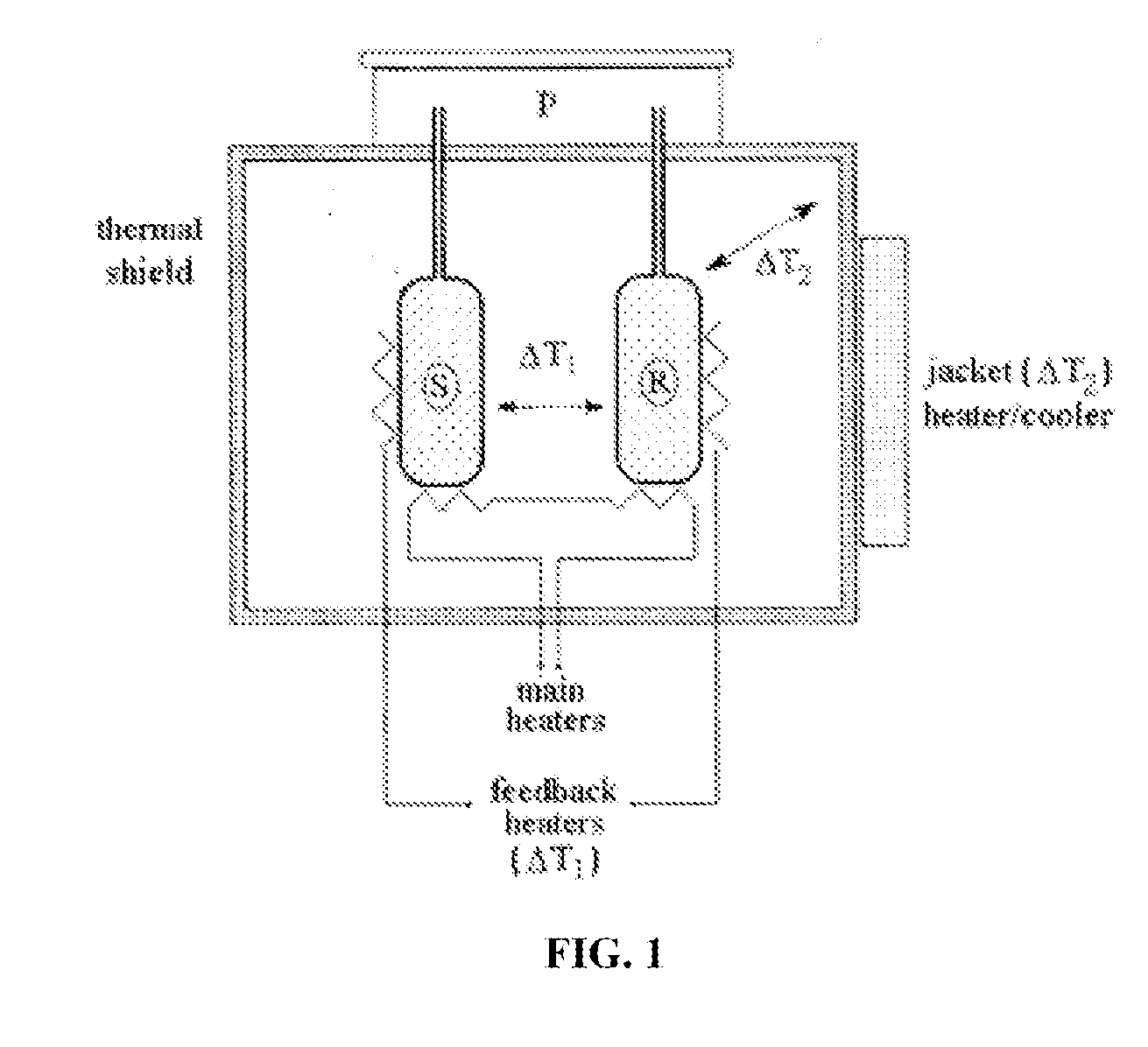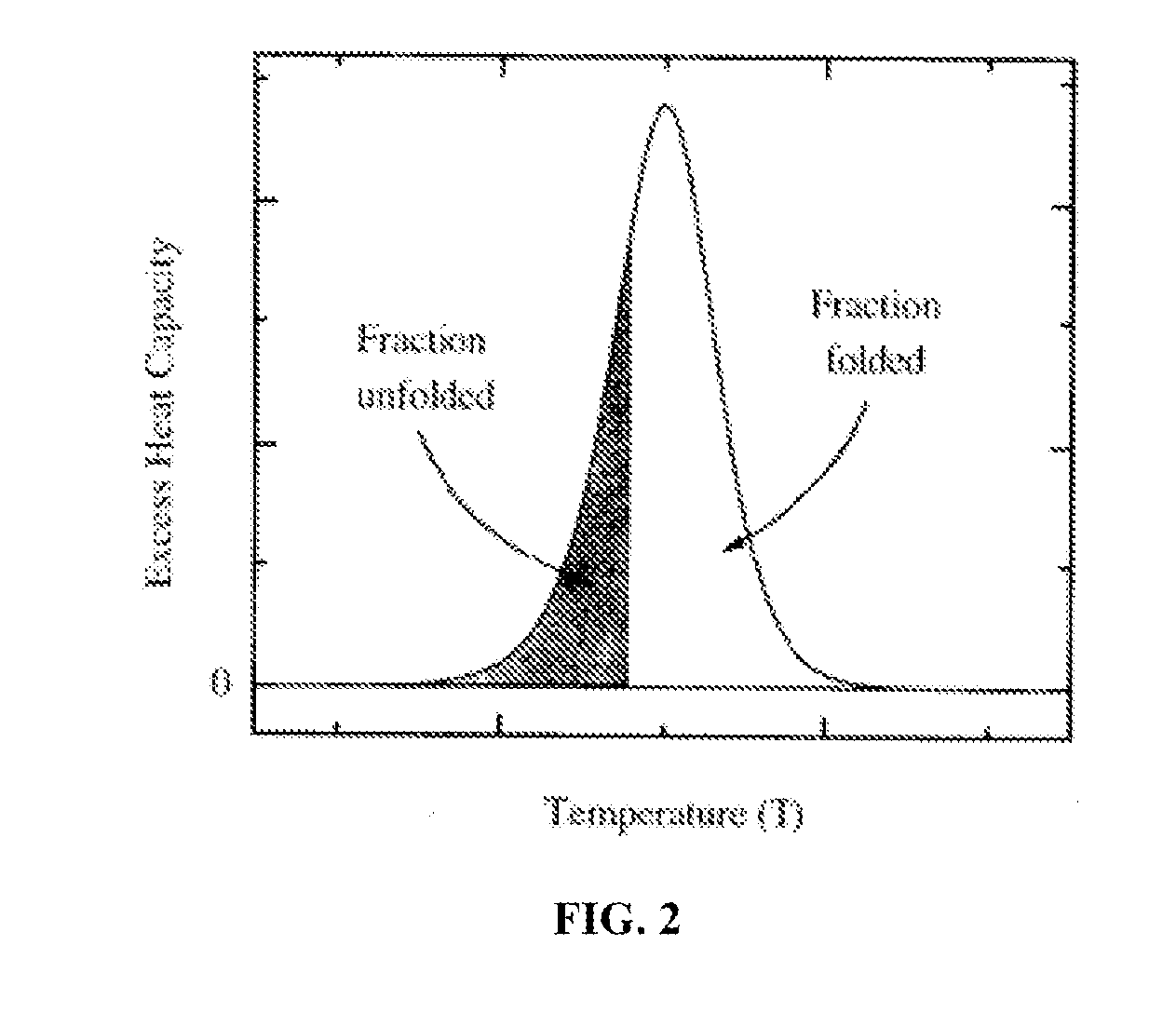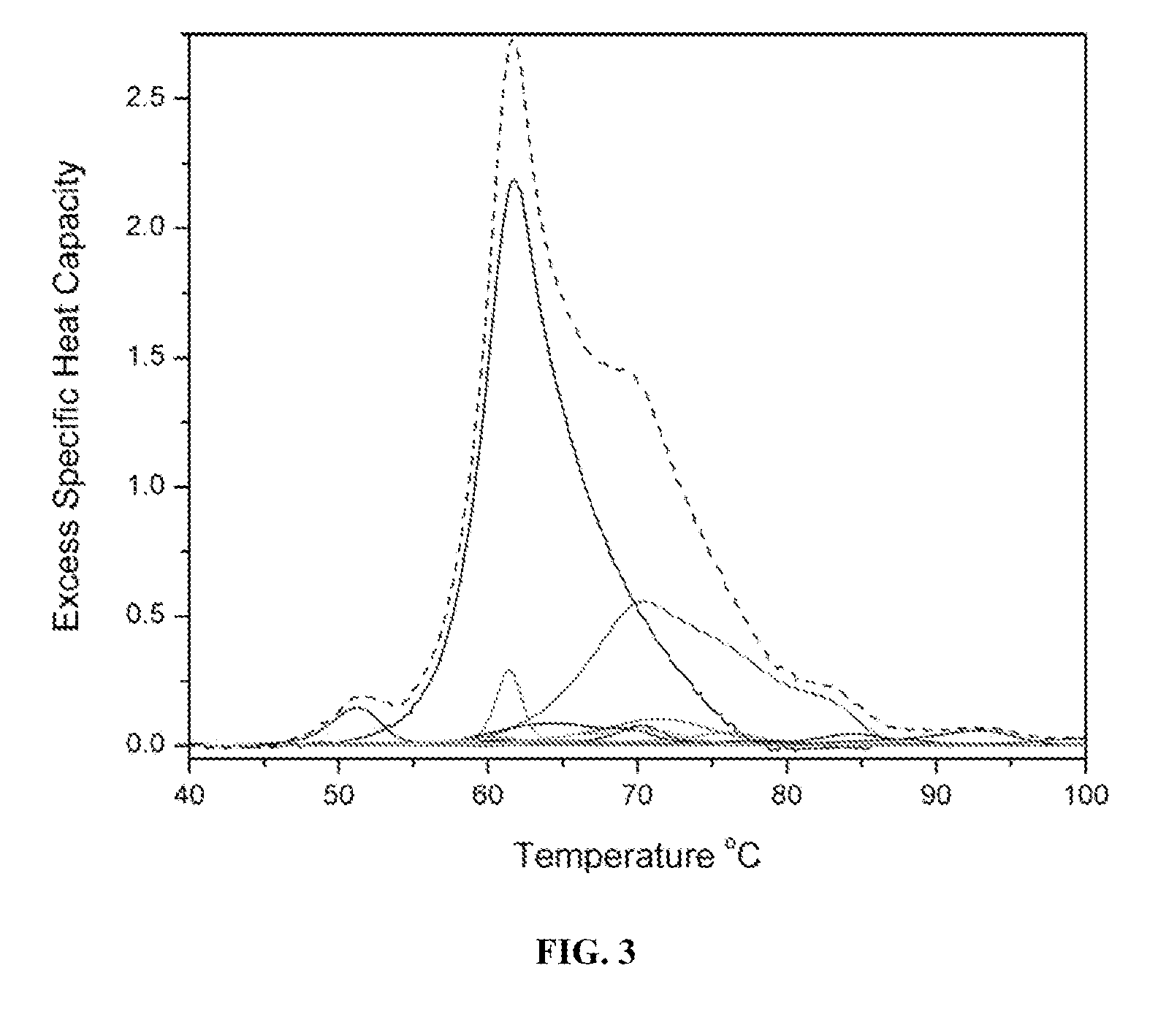Proteomic profiling method useful for condition diagnosis and monitoring, composition screening, and therapeutic monitoring
a proteomic profiling and composition screening technology, applied in the direction of complex mathematical operations, instruments, material analysis, etc., can solve the problems of difficult fractionation and quantification of the remaining 1%, insufficient detection of less-abundant proteins, and limited method sensitivity, etc. equipment necessary for practicing this serum protein electrophoresis method is expensive to obtain and maintain
- Summary
- Abstract
- Description
- Claims
- Application Information
AI Technical Summary
Benefits of technology
Problems solved by technology
Method used
Image
Examples
examples
[0134]Reproducible Thermogram for normal plasma. FIG. 8 shows an average thermogram obtained from plasma samples from 15 normal subjects. The thermogram displays multiple peaks and shoulders, yet is surprisingly simple, given the complexity of the plasma proteome. The average thermogram is shown as the black trace, and the standard deviation from the mean appears as the shaded region of FIG. 8. The standard deviation of the data is low, and is comparable to the range in values observed in normal subjects for the concentrations of individual plasma proteins (Craig (2004)). Human serum albumin, for example, has a normal reference range of approximately 35 to 55 g / L, dependent on age and gender (Craig (2004)). This analysis indicates that thermograms from normal subjects are highly reproducible. As noted below, the thermograms for samples associated with various conditions of interest all deviate beyond the range of normal values of the thermogram of FIG. 8, and their patterns must be ...
PUM
| Property | Measurement | Unit |
|---|---|---|
| concentration | aaaaa | aaaaa |
| angle | aaaaa | aaaaa |
| pH | aaaaa | aaaaa |
Abstract
Description
Claims
Application Information
 Login to View More
Login to View More - R&D
- Intellectual Property
- Life Sciences
- Materials
- Tech Scout
- Unparalleled Data Quality
- Higher Quality Content
- 60% Fewer Hallucinations
Browse by: Latest US Patents, China's latest patents, Technical Efficacy Thesaurus, Application Domain, Technology Topic, Popular Technical Reports.
© 2025 PatSnap. All rights reserved.Legal|Privacy policy|Modern Slavery Act Transparency Statement|Sitemap|About US| Contact US: help@patsnap.com



